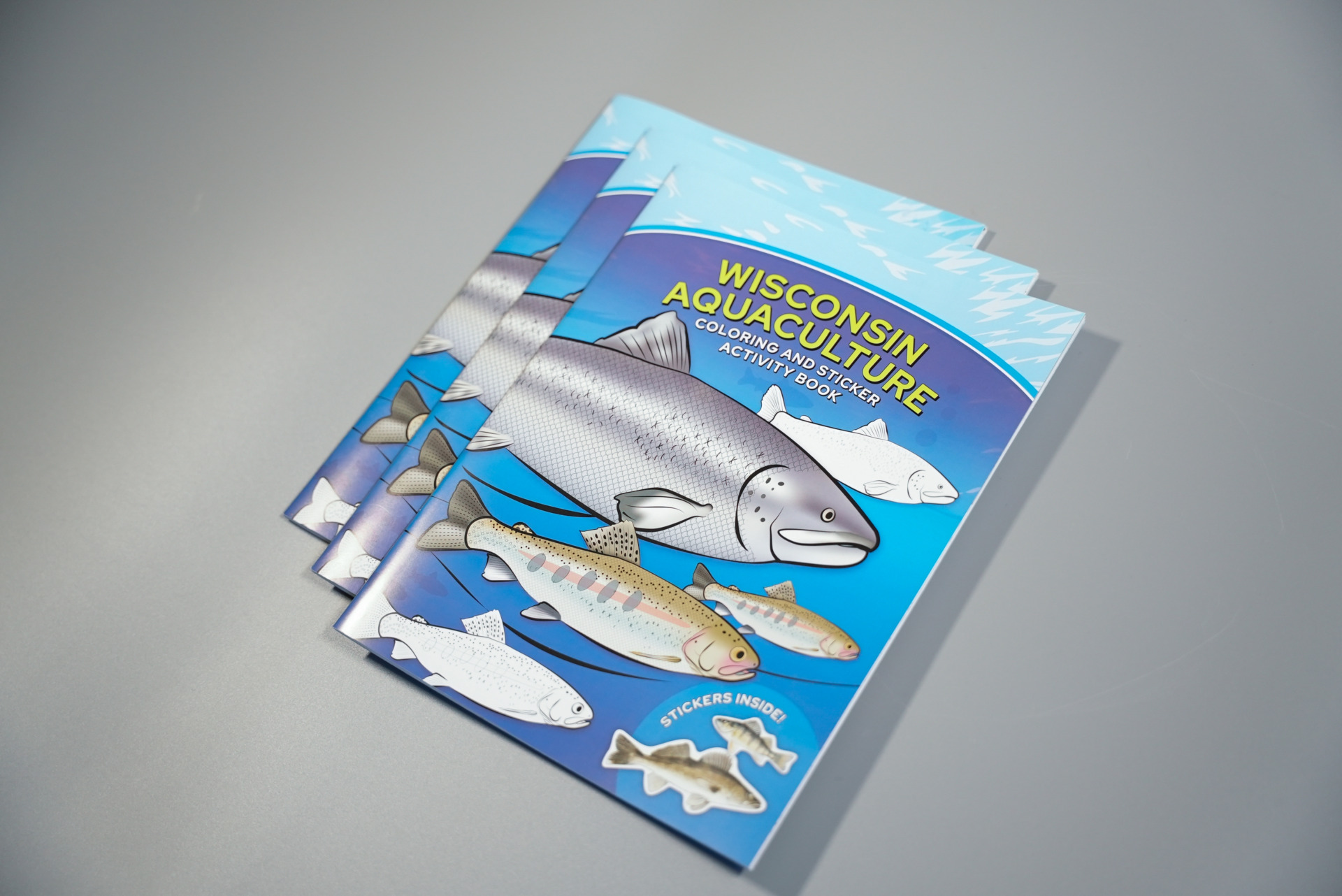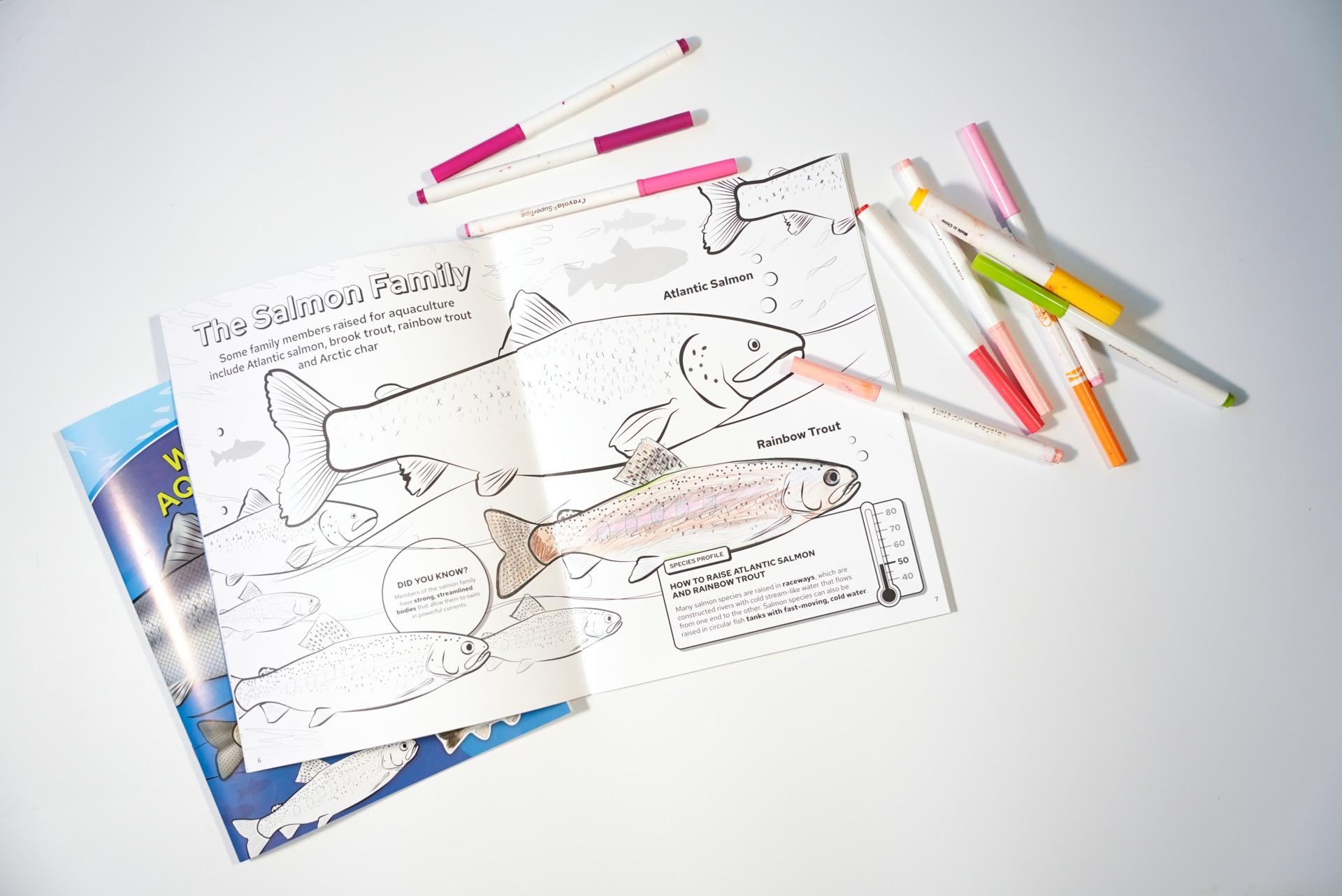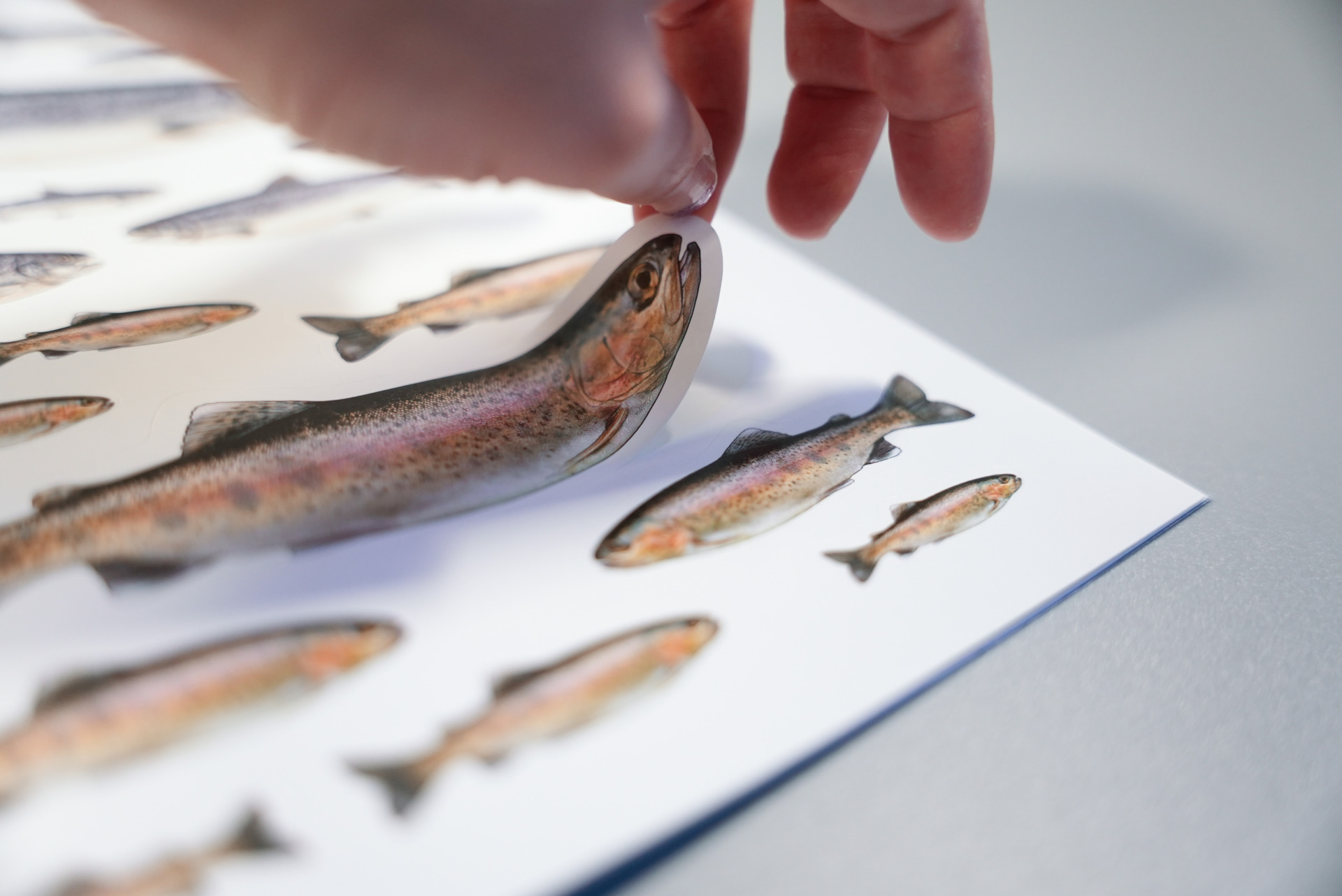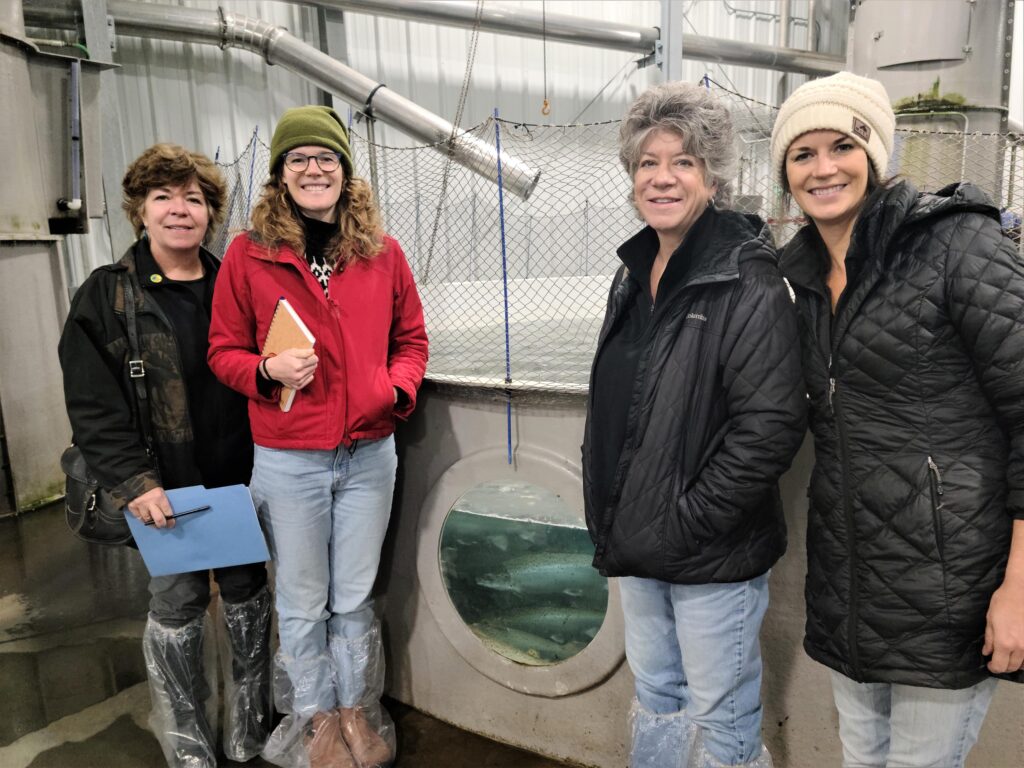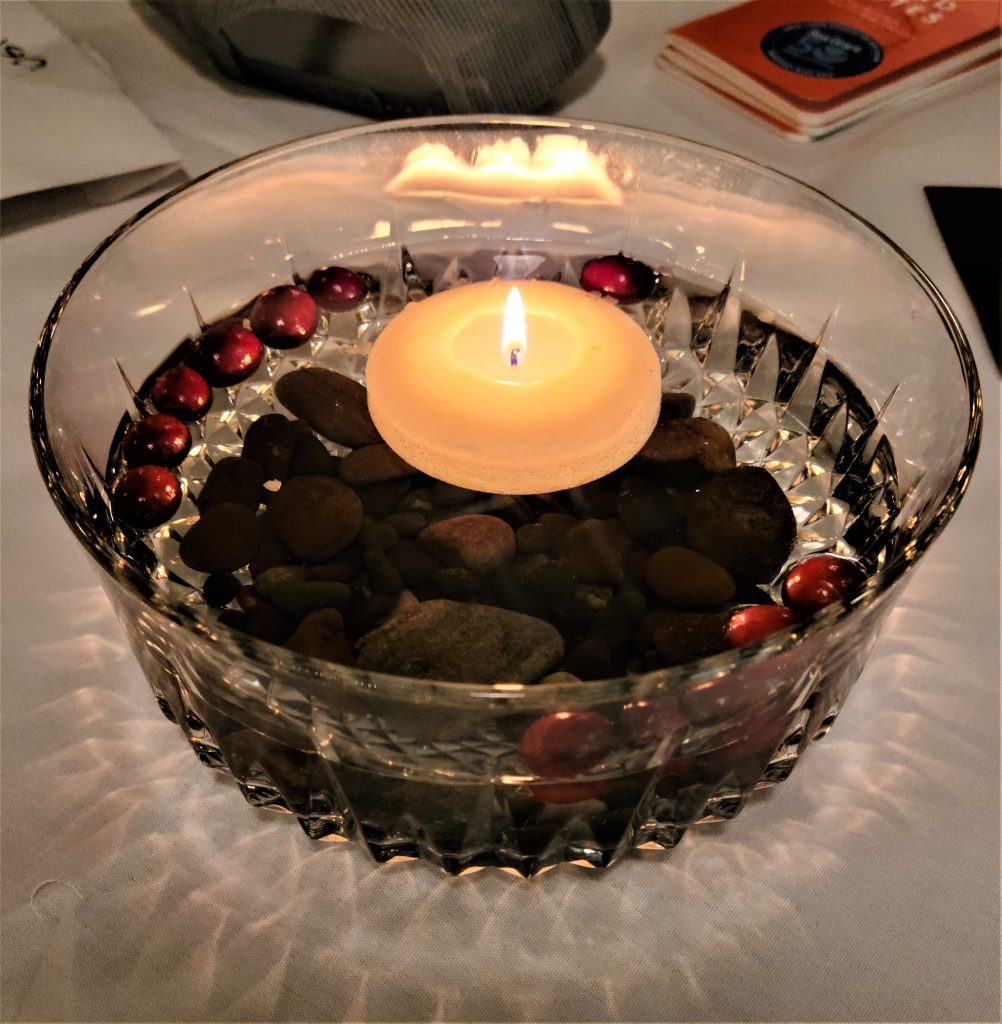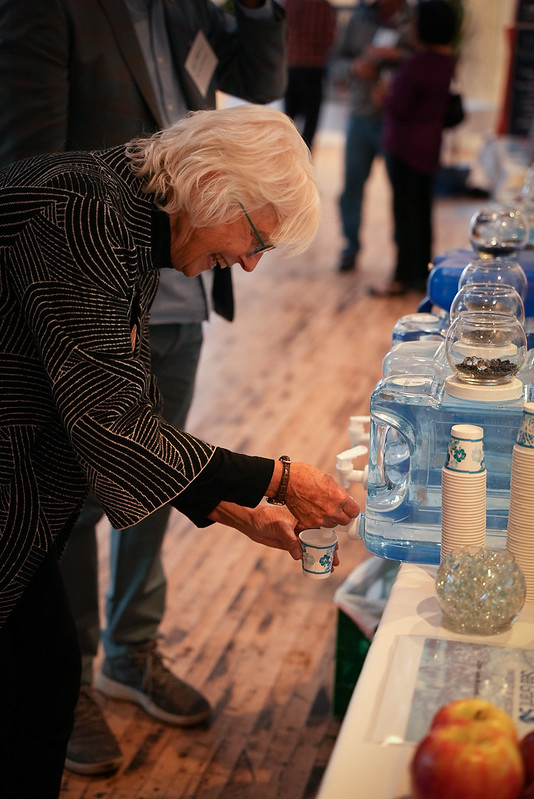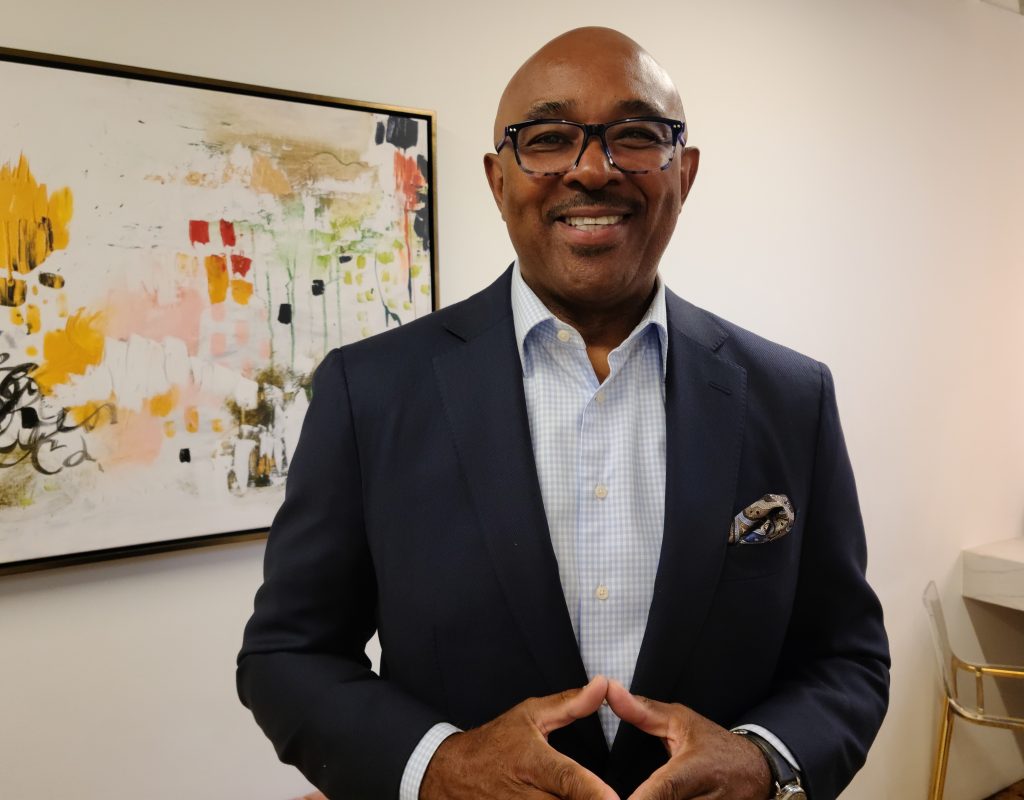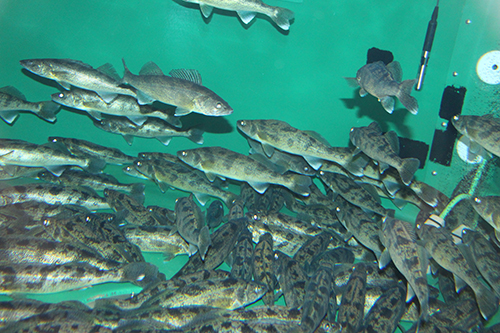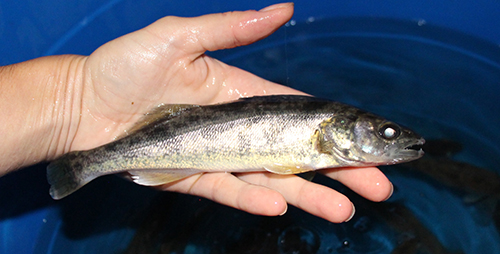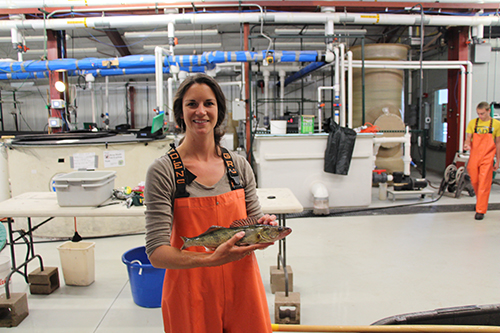Summer students learn the ropes of fish farming
Some people revel in the dog days of summer, but for a dozen aquaculture interns, the season was all about fish.
In partnership with Wisconsin Sea Grant and funded through a grant from the Freshwater Collaborative of Wisconsin, the interns were stationed at aquaculture facilities across the state, working alongside mentors to get hands-on experience raising and caring for fish. According to Wisconsin Sea Grant food-fish coordinator Sharon Moen, who led the project alongside aquaculture specialists Emma Hauser and Dong-Fang Deng, the purpose of the internships was to build awareness of fish farming and offer training opportunities for young people.
“We couldn’t be happier with the way this first-time program unfolded,” said Moen. “The students and mentors gained so much during a short 10 weeks.”
Raising fish was not the only new skill the interns acquired. They learned how to manage projects, work on a team, and — importantly — embrace the many utilitarian wonders of PVC pipes and power tools.
Here’s a snapshot of some of their projects.
Yellow perch, aquaponics, and renewable energy at Northey Farms
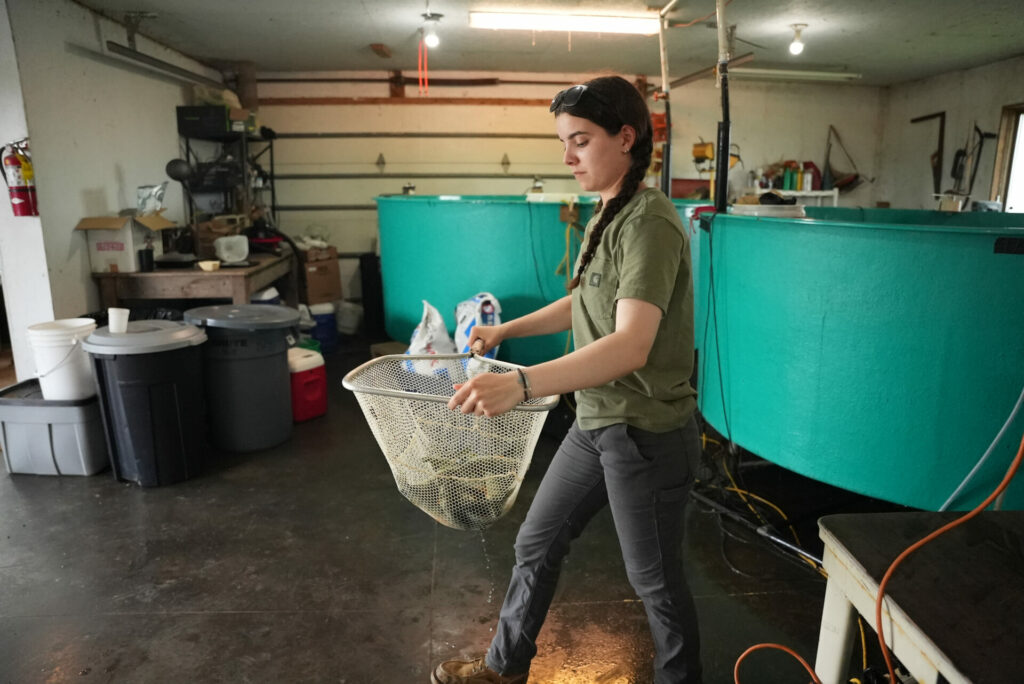
Rachel Virnig transports yellow perch at Northey Farms. Credit: Wisconsin Sea Grant
University of Wisconsin–Madison undergraduates Jack Patterson, Erin Ross, and Rachel Virnig interned at Northey Farms in Deerfield, Wisconsin, a fish farm that uses both outdoor ponds and a recirculating aquaculture system to raise yellow perch. Under the supervision of Kyle Freimuth, a University of Wisconsin–Milwaukee School of Freshwater Sciences graduate student, the team of interns learned how to monitor water quality, clean tanks, and care for more than 27,000 yellow perch.
Freimuth got a crash course in farm management. He developed a system for interns to track daily water quality, allocate tasks, and communicate with the farm owner. “I feel good about the work,” said Freimuth. “I was able to see all the little things that we were able to do to better care for the fish.”
For Patterson, Ross, and Virnig, the biggest project of the summer was building an aquaponic system in an outdoor hoop house. When it wasn’t being burglarized by racoons, the plant-and-fish production system supported bluegill and yellow perch alongside tomatoes, eggplants, peppers, basil, and tomatillos. The interns also constructed — from scratch and with no directions! — a mini wind turbine to power the whole system. The project was a point of pride for the team, who enjoyed creating a functioning, self-sufficient food system and learning new, practical life skills.
“I didn’t know how to use power tools before this internship, and that became a daily skill,” said Ross. “That was huge for me as a young adult.”
Research, education, and outreach at Northern Aquaculture Demonstration Facility
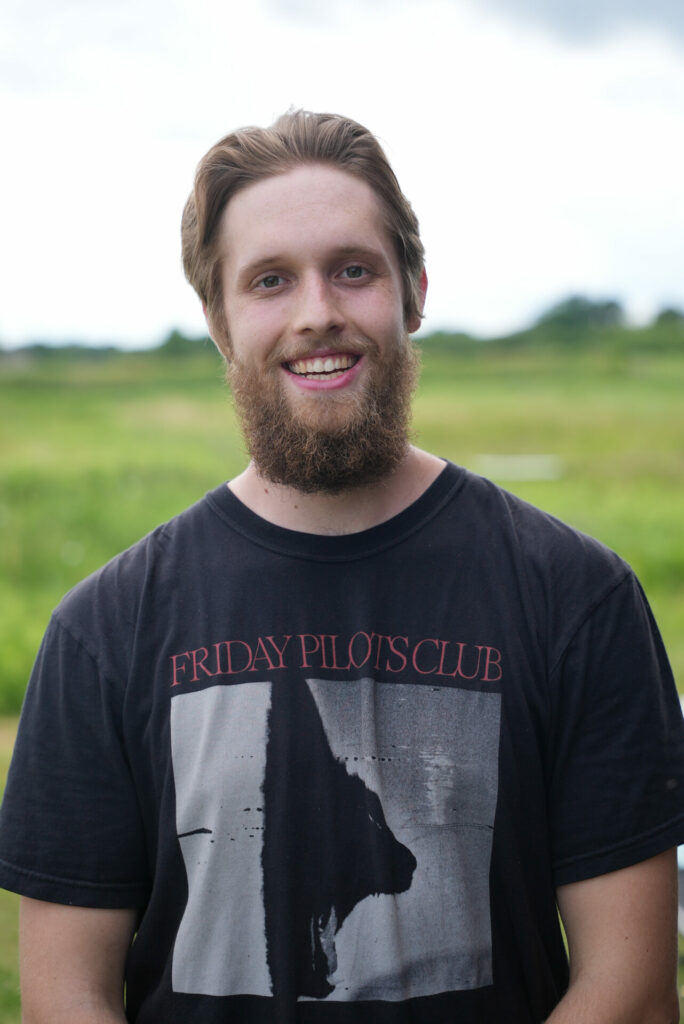
Wyatt Slack. Credit: Wisconsin Sea Grant
Like most of the interns, Wyatt Slack was largely unfamiliar with aquaculture prior to this summer. Fast forward two months, and he was teaching others about what he learned.
Slack, an undergraduate at the University of Wisconsin–Madison, worked at the University of Wisconsin–Stevens Point Northern Aquaculture Demonstration Facility in Red Cliff, Wisconsin. The facility supports aquaculture research and showcases the latest techniques and technologies while also educating others about the industry. As an intern, Slack got to do a little bit of everything.
“Some days we spawned salmon. Others, we took blood samples from lake trout or set up another experiment,” said Slack. “No day looks exactly the same.”
One task remained constant, however, and that was cleaning. Slack used a windshield wiper attached to a PVC pipe to clean the circular walls of the fish tanks. It was a funny but utterly functional tool that was, in a lot of ways, emblematic of the ingenuity of fish farmers.
“PVC pipes are the lifeblood of these systems,” he laughed.
Slack also practiced communicating the science of aquaculture to different audiences, from kids to adults. He gave tours to visiting groups, showed kindergartners big fish, and made art at Kid’s Fishing Day. His last assignment was serving walleye he helped raise to about 150 people at an event in Houghton, Michigan. During the event he talked to participants and a reporter about aquaculture in the Upper Midwest.
“Outreach was definitely one of the most fulfilling parts of this internship,” he said.
Raising zebrafish at the Morgridge Institute for Research
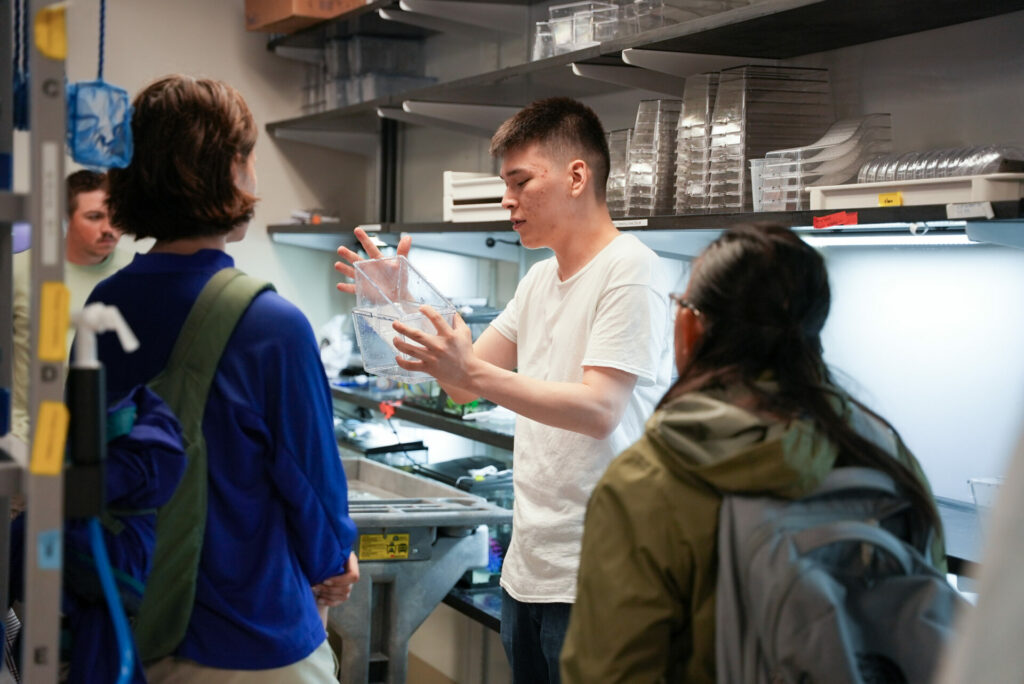
Raatbek Baizakov explains zebra fish breeding tanks at the Morgridge Institute. Credit: Wisconsin Sea Grant
While aquaculture often produces fish for food, fish farms also raise fish for bait, stocking and, as University of Wisconsin–Madison student Raatbek Baizakov learned, research.
Baizakov spent his summer interning at the Morgridge Institute for Research, a biomedical research facility in Madison, Wisconsin. Originally from Kyrgyzstan, Baizakov grew up helping his dad raise trout.
“I had experience with game fish. I didn’t really have experience with research fishes,” he said. “It’s not really similar at all.”
Instead of trout, Baizakov worked with zebrafish, a small striped fish with the unique ability to regrow damaged body parts like fins, heart tissue, and spinal cords. Researchers at Morgridge study the fish for this reason, hoping to find ways to heal similar injuries in people.
Working with a small team, Baizakov provided daily care for 2,250 tanks of zebrafish, which involved feeding and flushing tanks. He also enjoyed learning about the system that pumps and recirculates water through the tanks, which he described as “genius.”
“As a mechanical engineer, I appreciated this so much,” he said.
Lab research at the University of Wisconsin–Milwaukee School of Freshwater Sciences
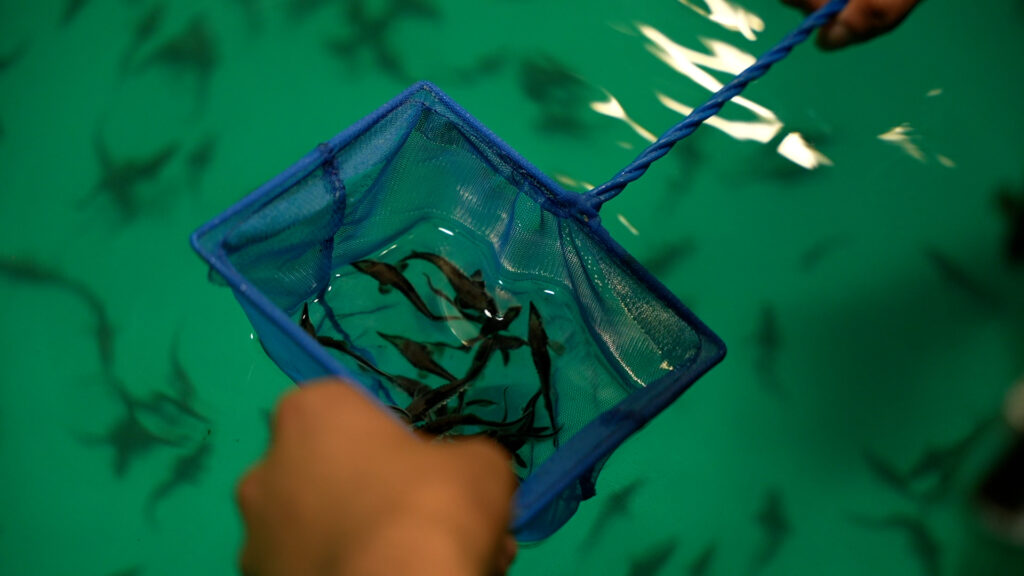
Baby sturgeon at the UW–Milwaukee School for Freshwater Sciences. Credit: Wisconsin Sea Grant
Another set of interns kept busy learning about fish care and nutrition in the lab of Wisconsin Sea Grant aquaculture outreach and extension specialist Dong-Fang Deng.
Though not all were funded by the Freshwater Collaborative of Wisconsin, Louis Benard, Kayden Knudsen, Alex Gregory, Cory Vines, and Tyler Gregorski worked side-by-side cleaning tanks, sorting fish, and pursuing individual projects, which ranged from the effects of microplastics on fish growth to incorporating novel ingredients like black soldier fly oil and soy cake into fish food.
“It’s a lot of fun,” said high school senior Knudsen, who investigated the impacts of microplastics on yellow perch. “Working at UWM has been a really good experience for developing ideas about my future.”
Mapping Wisconsin fish farms
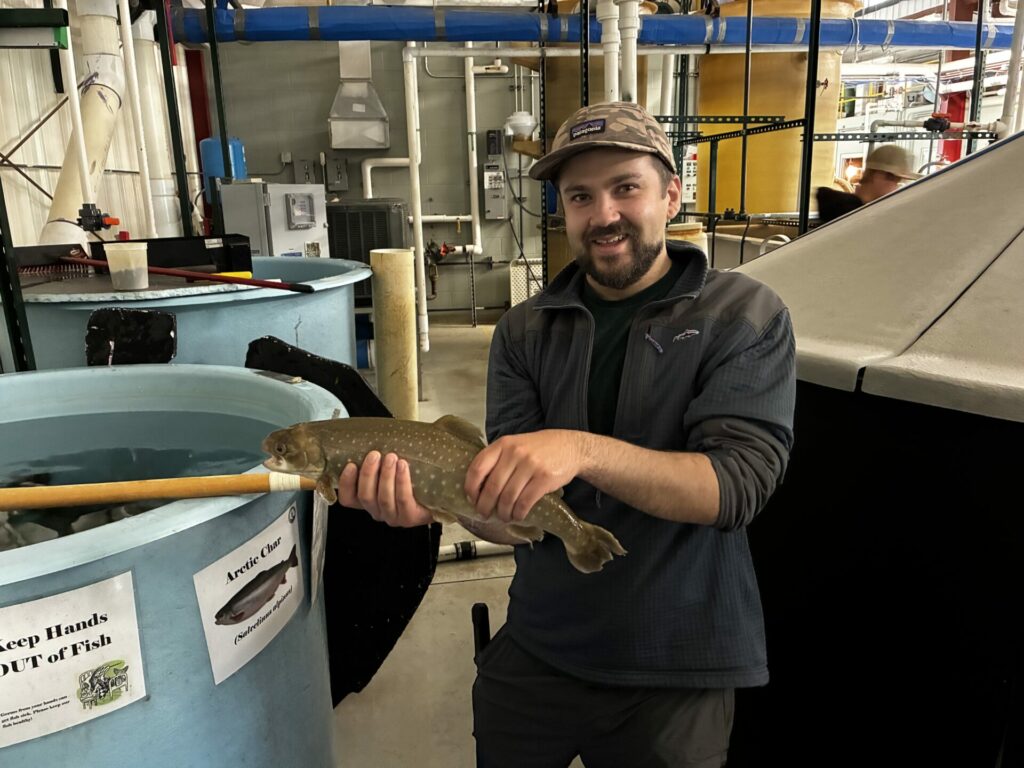
Ryan Figueroa visited the University of Wisconsin-Stevens Point Northern Aquaculture Demonstration Facility as part of his internship. Submitted photo.
Unlike the other interns, Ryan Figueroa didn’t work at a fish farm, but he did get a bird’s-eye view of the aquaculture industry across the state. Figueroa, an undergraduate at the University of Wisconsin–Superior with an interest in GIS, worked with Moen to revamp the Eat Wisconsin Fish food fish maps to show the location and features of aquaculture and commercial fishing operations in Wisconsin. The goal was to make aquaculture visible and accessible to those wanting to buy locally raised fish.
“Maps help connect people to local food systems,” said Figueroa. That certainly was the case for him. He visited several fish operations to collect geospatial data and enjoyed eating some of their wares. He also appreciated having Moen as his mentor for the summer.
“She’s the best,” said Figueroa. “I really want to emulate what she does. I loved seeing how she works and how she communicates with people. She’s been a huge help for me.”
To learn more about the interns’ experiences, check out this video made by aquaculture outreach specialist Emma Hauser.
***
The University of Wisconsin Aquatic Sciences Center administers Wisconsin Sea Grant, the Wisconsin Water Resources Institute, and Water@UW. The center supports multidisciplinary research, education, and outreach for the protection and sustainable use of Wisconsin’s water resources. Wisconsin Sea Grant is one of 34 Sea Grant programs supported by the National Oceanic and Atmospheric Administration in coastal and Great Lakes states that encourage the wise stewardship of marine resources through research, education, outreach, and technology transfer.
The post Summer students learn the ropes of fish farming first appeared on Wisconsin Sea Grant.News Releases | Wisconsin Sea Grant
News Releases | Wisconsin Sea Grant
https://www.seagrant.wisc.edu/news/summer-students-learn-the-ropes-of-fish-farming/

